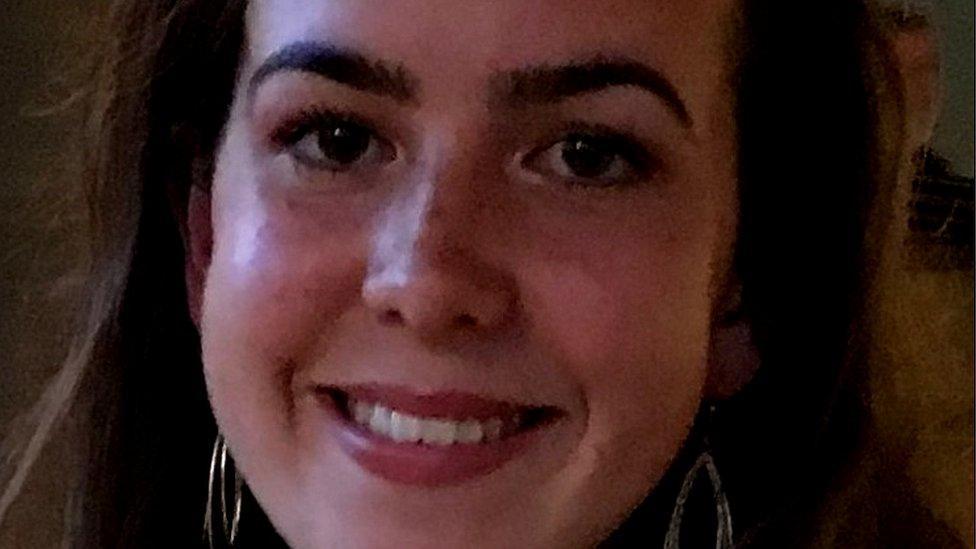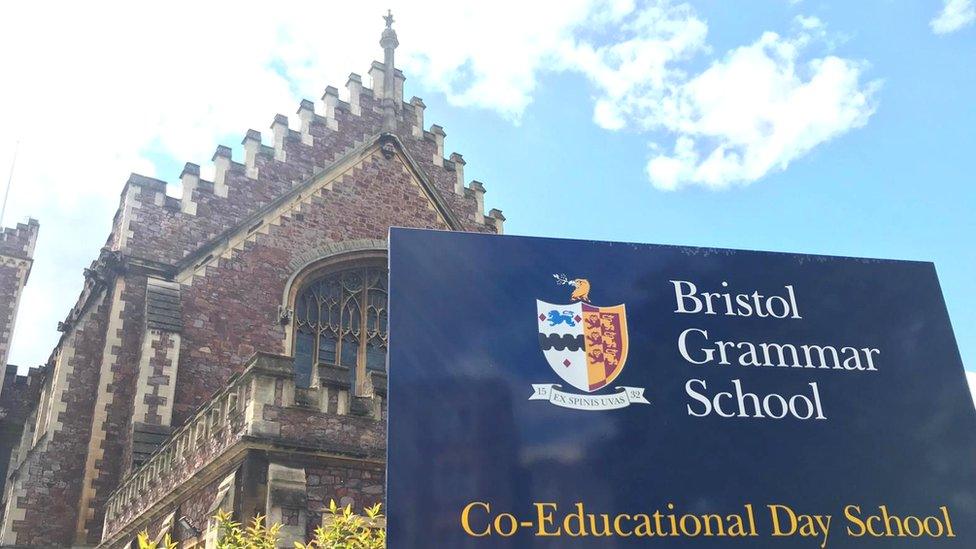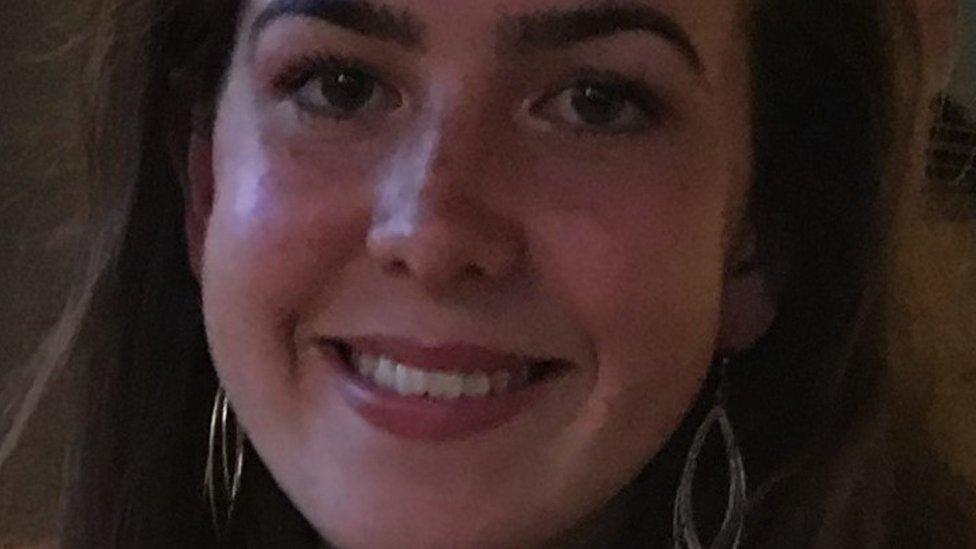Ana Uglow: Teenage sepsis victim 'could have been saved'
- Published

Miss Uglow was a senior prefect at Bristol Grammar School
A teenager who died on a school trip could still have survived if she had been treated in the hours before her death, an inquest heard.
Ana Uglow, 17, a student at Bristol Grammar School, collapsed and died later in hospital on 19 December 2019.
A consultant general paediatrician said Miss Uglow would have survived had she taken antibiotics two days before.
Dr Nelly Ninis said the chance of Ana surviving with treatment six hours before her death was "above 50%".
A senior prefect, of Redland, Bristol, Miss Uglow was on a school history trip to Washington, Philadelphia and New York when she fell ill.
Avon Coroner's Court heard it was likely she had flu when the trip started on 14 December, with her symptoms worsening and becoming pneumonia between 16 and 18 December.
Miss Uglow is believed to have developed a secondary bacterial infection, group A streptococcus, around that time and sepsis between 18 and 19 December.

Miss Uglow was on a history trip with fellow Bristol Grammar School pupils
Dr Ninis said Miss Uglow's pneumonia would have been cured if she had received "high-dose, broad-spectrum oral antibiotics" and taken them on 17 December.
On the day she died, Miss Uglow woke up teacher Rory Hambly at 06:15, complaining that she felt unwell, her heart was racing and that she was anxious.
She went into cardiac arrest at 08:15, paramedics arrived at 08:26 and she was pronounced dead at 10:00 at the Mount Sinai West hospital.
"At 06:00, her chance of survival was not zero, it was above zero," Dr Ninis said.
But she said Miss Uglow would have needed to go to hospital - where she would have been admitted to intensive care - at least six hours before her collapse.
"At the point Ana went into cardiac arrest, I think her chance of survival was zero," Dr Ninis said.
"What I believe is that six hours earlier, it was above 50% that her life could have been saved."
The inquest continues.

What are the symptoms of sepsis?
Sepsis: What is it - and how to spot it?
In adults:
Slurred speech
Extreme shivering or muscle pain
Passing no urine in a day
Severe breathlessness
High heart rate and high or low body temperature
Skin mottled or discoloured
In children:
A mottled, bluish or pale appearance
Very lethargic or difficult to wake
Abnormally cold to touch
Breathing very fast
A rash that does not fade when you press it
A seizure or convulsion
Related topics
- Published12 May 2021

- Published12 May 2021

- Published10 May 2021
